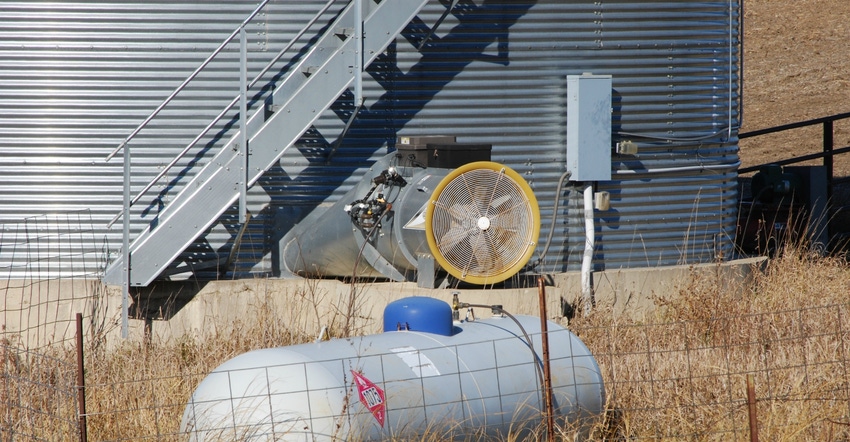
It’s important to keep grain that’s stored in on-farm bins cool going into the spring and summer. Some warming of stored grain may have already occurred during the recent warmer weather and with the sun shining on the south side of grain bins.
However, with colder weather forecast for Iowa through April 10, this may be the last good time to completely aerate your stored grain before warmer spring weather arrives, says Greg Brenneman, Iowa State University Extension ag engineer.
The forecast is for daily high temperatures in the 30s and low 40s, with lows in the 20s. Now is the time to take advantage of this grain aeration opportunity.
Keep grain below 40 degrees
“Ideally, we like to keep stored grain temperatures below 40 degrees F going into the summer months. By keeping grain as cool as possible, we can limit insect activity and growth of spoilage molds,” Brenneman says.
Brenneman reminds farmers it only takes about 15 hours for a large drying fan (a fan rated at 1 hp per 1,000 bushels) to completely change the temperature of the grain in a full bin. However, a small aeration fan (a tenth horsepower per 1,000 bushels) may take five to six days to completely cool a full bin.
“Keep a close eye on the fans and the weather so you don't inadvertently warm it back up when temperatures increase next week,” he says.
Some corn should be moved, dried
Some corn went into storage late last fall in the 15% to 16% grain moisture range as it came out of the field. It’s important to get this corn moved or dried before going into the summer, Brenneman says. To store grain safely during summer, the maximum moisture content is 13% to 14% for corn and 11% for soybeans.
“Mold growth will occur at summer temperatures if the grain exceeds these moisture contents,” he says. The allowable storage time for 15% moisture corn is about four months at 70 degrees and only about two months at 80 degrees.
Tips to keep grain cool
Because grain is a good insulator, during the summer most of the warming will occur at the surface of the grain. You need to provide an air inlet near the bin roof eave and an outlet near the peak to reduce the hot air in the top of the bin, Brenneman explains. Similar to venting an attic, the heated air rises and is exhausted at the peak. A ventilation fan to exhaust the hot air from the top of the bin is another option.
During summer, it is suggested that you run the aeration fan for a few hours to push air up through the cool stored grain to cool grain near the top. Pick a cool morning every two to three weeks during summer to run the aeration fan, and only run the fan a few hours to minimize heating grain at the bottom of the bin.
“Cover the aeration fans when they are not operating to prevent additional heating of the grain,” Brenneman says. “If you don’t cover the fans, outside warm air will enter. The wind and a natural chimney effect will push warm, moist spring air through the grain warming it and possibly adding some moisture.”
Monitoring grain for temperature and moisture content is essential. Brenneman advises farmers to use temperature sensors to help determine if stored grain is at risk from mold and insect development.
About the Author(s)
You May Also Like




